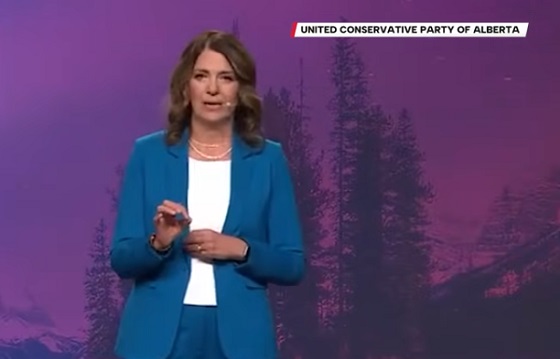Politics
Florida Panthers receive special honour during White House visit

Visiting Washington to take on the home town Capitals, the Stanley Cup Champion Florida Panthers enjoyed the traditional White House visit by champion teams.
The team had to spend almost an hour in the penalty box so to speak, as the President delayed the ceremony for nearly an hour in order to deal with the emerging tariff situation with Canadian Prime Minister Justin Trudeau.
In the end, President Trump made it up to the team by escorting them into the Oval Office for a one of a kind photo.. which is not part of the typical ceremonies.

The Panther players all came dressed in typical Trump fashion, sporting blue suits, with white shirts and red ties.
In an interesting twist, turns out team owner Vincent Viola is a friend of the President’s. Back in 2016, Viola was Trump’s original nomination as Secretary of the Army. Viola withdrew from consideration.
During the ceremony which took just less than 20 minutes, President Trump repeatedly stopped to pay tribute to several stand out players and accepted a gift of a Panthers jersey and a golden hockey stick.
Censorship Industrial Complex
Conservative MP Leslyn Lewis slams Liberal plan targeting religious exemption in hate speech bil
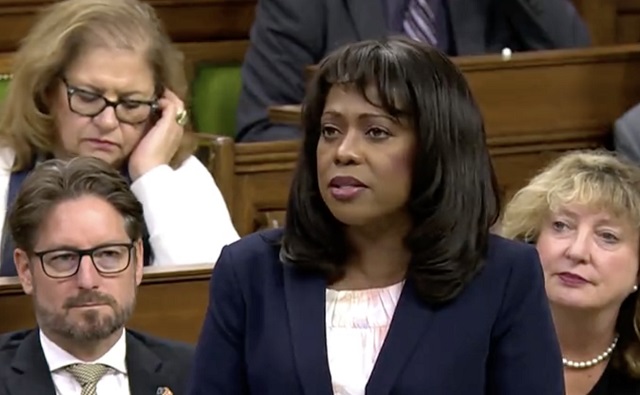
From LifeSiteNews
Bill C-9 is being called an attempt to criminalize sections of the Bible, Quran, Torah, and other sacred texts in Canada.
Canadian Conservative MP Leslyn Lewis blasted a federal government plan to criminalize parts of the Bible as an attack on “Christians,” warning it sets a “dangerous precedent” for Canadian society.
“The Liberal government has agreed to remove the religious exemption in their hate speech bill, C-9, to secure Bloc support and push this bill through Parliament,” Lewis wrote Tuesday on X.
“This is not a minor adjustment. This shift comes at the direct expense of Christians and other religious communities across Canada.”
As reported by LifeSiteNews, a government insider revealed that the Liberal government of Prime Minister Mark Carney plans to remove religious exemptions from Canada’s hate-speech laws by modifying a bill.
Bill C-9, the Combating Hate Act, as reported by LifeSiteNews, has been blasted by constitutional experts as allowing empowered police and the government to go after those it deems have violated a person’s “feelings” in a “hateful” way.
A recent media report states that the Carney Liberals and the separatist Bloc Québécois want to amend Bill C-9, which would “criminalize sections of the Bible, Quran, Torah, and other sacred texts,” Conservative leader Pierre Poilievre noted yesterday on X.
Lewis warned that “no government” should “ever negotiate away religious liberty in exchange for political support.”
“No party should decide which beliefs are acceptable and which ones carry criminal risk,” she warned.
She added that the Liberal government of Carney’s plan to amend Bill C-9 is a “dangerous precedent.”
“Religious freedom is not a political tool. It is a Charter right, a constitutional protection, and a cornerstone of our society,” she warned.
Poilievre blasted the Liberals’ plan as well, warning Liberal-Bloc amendments to C-9 will “criminalize sections of the Bible, Quran, Torah, and other sacred texts.”
“Conservatives will oppose this latest Liberal assault on freedom of expression and religion,” he noted on X earlier this week.
In response, the party launched a petition over fear that religious texts could be criminalized.
Liberal MP Marc Miller had said earlier in the year that certain passages of the Bible are “hateful” because of what it says about homosexuality and those who recite the passages should be jailed. As reported by LifeSiteNews, he was recently appointed as a government minister by Prime Minister Mark Carney.
Energy
Canada following Europe’s stumble by ignoring energy reality

Family in Spain eating by candlelight during a blackout, April 2025
From Resource Works
Canada’s own 2024 grid scare proves we’re on the same path unless we change course.
Europe’s green-energy unraveling is no longer a distant cautionary tale. It’s a mirror — and Canada is already seeing the first cracks.
A new Wall Street Journal investigation lays out the European story in stark detail: a continent that slashed emissions faster than anyone else, only to discover that doing so by tearing down firm power before its replacement existed comes with brutal consequences — collapsing industry, sky-high electricity prices, political fragmentation, and a public increasingly unwilling to subsidize wishful thinking.
The tragedy isn’t that Europe tried to decarbonize quickly.
The tragedy is how they did it: by insisting on an “or” transition — renewables or fossil fuels — instead of what every energy-literate nation outside Europe pursued: renewables and fossil fuels, working together while the system evolves.
And here’s the uncomfortable truth:
Canada has already had its first European-style crisis. It happened in January 2024.
Canada’s early warning: the January 2024 electricity crunch
Most people have already forgotten it, because our political class desperately wanted you to. But in January 2024, Western Canada came within a whisker of a full-blown energy security breakdown. Alberta, Saskatchewan, and B.C. were stretched to their limit. The grid was under cascading stress. Contingency plans were activated. Alberta came terrifyingly close to rolling blackouts.
It wasn’t caused by climate change. It wasn’t caused by a mysterious cyberattack.
It was caused by the same structural brittleness now crippling Europe:
- Insufficient firm power, after years of political messaging that we could “electrify everything” without adding real generating capacity.
- Overreliance on intermittent sources not backed by storage or gas.
- A planning system that punted risk into the future, betting the grid could be stretched indefinitely.
The January 2024 event was not a blip. It was a preview.
Our European moment in miniature.
But instead of treating it as the national wake-up call it should have been, B.C. did something telling — and deeply damaging.
The B.C. government’s response: attack the messenger
Just a couple of years ago, an economist publicly warned about the economic price of emerging system vulnerabilities due to a groaning stack of “clean economy” policies.
The B.C. government didn’t respond with data, evidence, or even curiosity. Instead, a cabinet minister used the safety of legislative privilege — that gold-plated shield against accountability — to launch nasty personal attacks on the economist who raised the concerns, which themselves had originated in the government’s own analysis.
No engagement.
No counter-analysis.
No willingness to consider the system risks.
Just slurs — the very definition of anti-intellectual governance.
It was a moment that told the whole story:
Too many policymakers in this province believe that energy systems obey politics, not physics.
Physics always gets the last word.
Europe shows us what political denial turns into
The WSJ reporting couldn’t be clearer about the consequences of that denial:
- Germany: highest domestic electricity prices in the developed world.
- U.K.: highest industrial electricity rates among major economies.
- Industrial flight: chemical plants closing, data centres frozen, major players hinting at exiting Europe entirely.
- Grid instability: wind farms paid tens of millions not to generate because the grid can’t handle it.
- Public revolt: rising support for parties rejecting the entire green-transition agenda.
- Policy whiplash: governments rushing to build gas plants they swore they’d never need.
Europe is now an object lesson in how good intentions, executed poorly, can produce the exact opposite of what was promised: higher prices, higher volatility, declining competitiveness, and a public ready to abandon climate policy altogether.
This is precisely what January 2024 warned us about — but on a continental scale.
The system cost we keep pretending doesn’t exist
Every serious energy expert knows the truth Europe is now living: intermittent renewables require massive amounts of redundant capacity, storage, and backup generation. That’s why the U.K. now needs 120 gigawatts of capacity to serve a demand previously met with 60–70 gigawatts, even though electricity use hasn’t meaningfully grown.
This is the math policymakers prefer not to show the public.
And it’s why B.C.’s refusal to have an honest conversation about firm power is so dangerous.
If we electrify everything without ensuring affordable and abundant natural gas generation, we’re not building a green future.
We’re building Europe, 10 years early.
The lesson for Canada — especially for B.C.
Here is what Europe and January 2024 together say, in one clear voice:
1. There is no energy transition without firm power.
Renewables are part of the system, but they don’t run the system. Natural gas does. Hydro does. Nuclear does. Pretending otherwise is how you end up with rolling blackouts.
2. Political denial makes crises worse.
When ministers attack economists instead of answering them, it signals that ideology is running the show. Europe learned the cost of that. We will too, unless we change course.
3. Affordability is the foundation of public consent.
Europe lost the room. Once people see their bills double while factories close, the climate agenda becomes politically radioactive.
4. B.C. has an advantage Europe would kill for.
Europe dreams of having an abundant, local, low-carbon firm-power fuel like northeastern B.C.’s natural gas. We treat it like a political liability. That’s not strategy. It’s negligence.
5. The transition will fail if we don’t treat electricity like the national security asset it is.
Without energy, there is no industry.
Without industry, there is no prosperity.
Without prosperity, there is no climate policy that survives the next election cycle.
What we need now
Canada must embrace an “and” strategy:
Renewables and natural gas. Electrification and realism. Climate ambition and economic competitiveness.
January 2024 showed us the future in a flash. Europe shows us the end state if we keep ignoring the warning.
We can still choose something better. But only if we stop pretending that energy systems bend to political narratives — and start treating them with the seriousness they demand.
Resource Works News
-
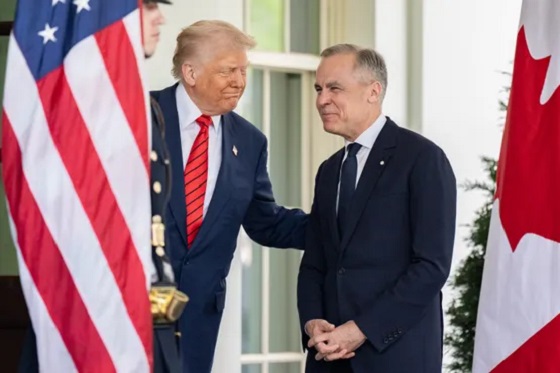
 National2 days ago
National2 days agoCanada Needs an Alternative to Carney’s One Man Show
-

 Alberta1 day ago
Alberta1 day agoThis new Canada–Alberta pipeline agreement will cost you more than you think
-

 Daily Caller2 days ago
Daily Caller2 days agoTech Mogul Gives $6 Billion To 25 Million Kids To Boost Trump Investment Accounts
-

 Business2 days ago
Business2 days agoRecent price declines don’t solve Toronto’s housing affordability crisis
-

 Automotive1 day ago
Automotive1 day agoPower Struggle: Governments start quietly backing away from EV mandates
-
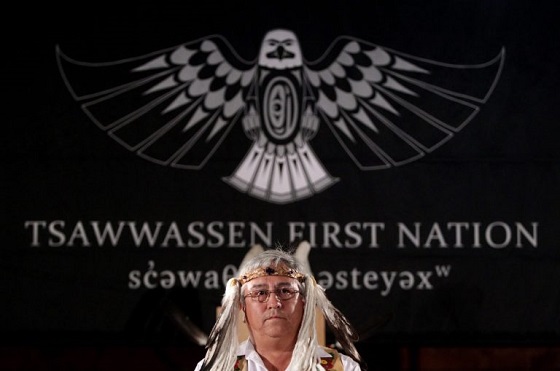
 Energy1 day ago
Energy1 day agoUnceded is uncertain
-
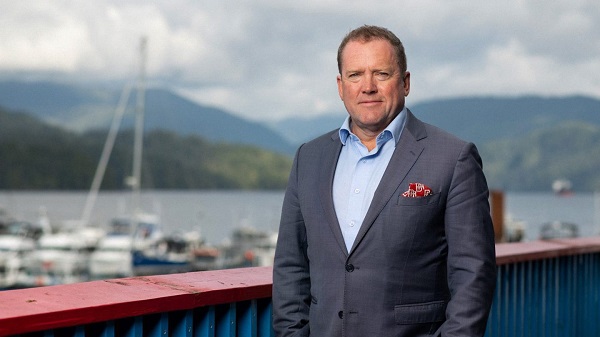
 Business2 days ago
Business2 days agoCanada’s future prosperity runs through the northwest coast
-

 Business10 hours ago
Business10 hours agoCanada’s climate agenda hit business hard but barely cut emissions


